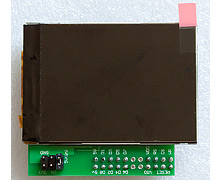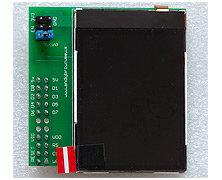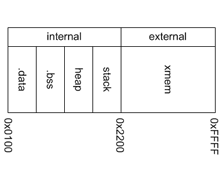It’s been a few months now since I released the original two articles that detailed the design, build and optimised software library for the 2.0″ Nokia 6300 QVGA TFT connected to the Arduino Mega XMEM interface. Judging by the responses I’ve had, there’s a lot of you...
Interfacing the Nokia 6300 QVGA TFT to the standard Arduino
posted by Andy
In two of my previous articles (here and here) I explained how we could connect the 8-bit 8080 interface presented by the TFT panel to the XMEM interface of the Arduino Mega to achieve a high performance full-colour graphical interface. I went on to present a high-performance open-source...
Nokia QVGA TFT LCD for the Arduino Mega. Design and build (part 1 of 2)
posted by Andy
In two of my previous articles I showed you how to reverse engineer the Nokia 2730 LCD for connecting to a device with 3.3V I/O’s and then I showed you how to build a 16-channel level converter for connecting devices together that have differing I/O level requirements. This article...
Nokia QVGA TFT LCD for the Arduino Mega. Graphics Library (part 2 of 2)
posted by Andy
In part 1 of this two part series I presented the hardware design and build for the Nokia 6300 TFT that shows how we can connect it directly to the external memory interface of the Arduino Mega and that by doing so we achieve the fastest possible interface between the TFT and the Arduino...
avr-gcc 4.7.0 and avr-libc 1.8.0 compiled for Windows
posted by Andy
At the time of writing, April 2012, the gcc team have released version 4.7.0 of the compiler package and the avr-libc developers have also released version 1.8.0 of the avr-libc library. Version list Tool Version Configuration avr-gcc 4.7.0 –with-gmp=/usr/local...
512Kb SRAM expansion for the Arduino Mega (design)
posted by Andy
Often when prototyping with an Arduino you run into the memory limitations inherent in a microcontroller programming environment. The Arduino Mega series goes a long way to solving the program size issues, offering as it does 128Kb and 256Kb formats. But what about the SRAM? Even the mega only...
512Kb SRAM expansion for the Arduino Mega (build)
posted by Andy
The second in this series of articles covers the PCB design and build process for the memory expansion board The Eagle board layout The board layout The signal lines are 10mil wide and the power lines are 16mil. I hand routed some of the power lines myself and then let Eagle’s...
512Kb SRAM expansion for the Arduino Mega (software)
posted by Andy
The final part of this series of blog posts will present some open source software that you can use to exploit the new memory space. You can download the library source code from my downloads page. The xmem library I’ve put together a collection of functions into a library that you can...







